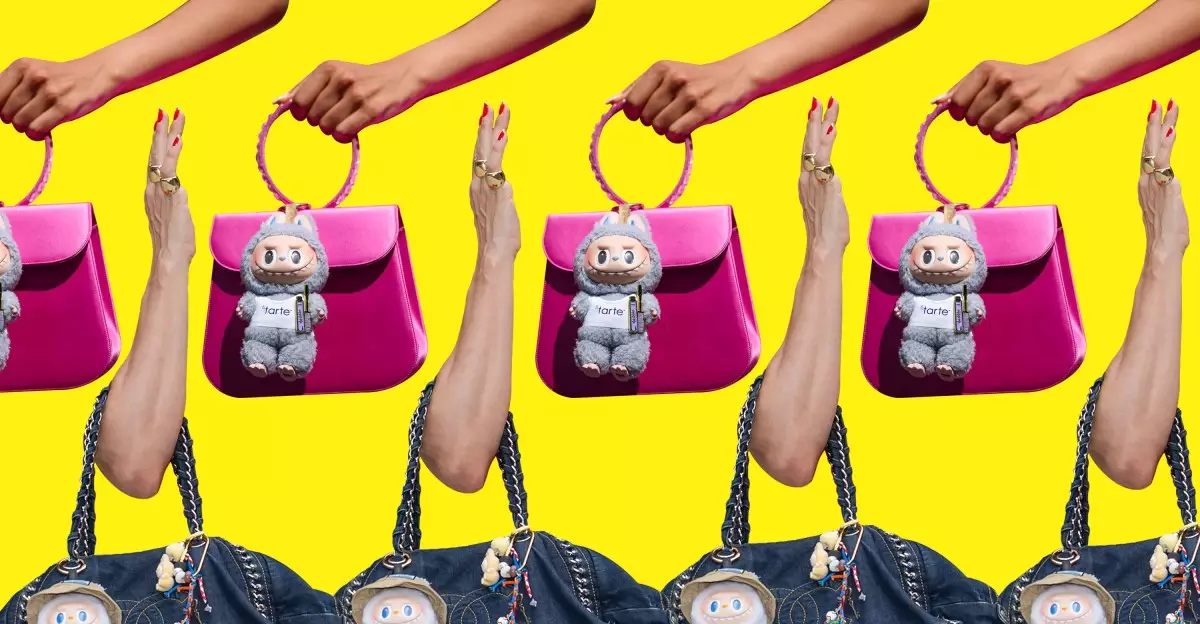In a world saturated with instant gratification and effortless acquisitions, the captivating thrill of the hunt has become an elusive, almost rebellious act. The phenomenon surrounding collectible toys like Labubu illustrates a broader cultural shift: people are craving more than just the object itself — they yearn for the journey, the challenge, and the excitement that comes with perseverance. This pursuit transcends mere consumerism and taps into primal instincts that make us feel alive, engaged, and, paradoxically, victorious. While some may dismiss the laborious efforts required to buy these toys as trivial or even foolish, it exposes a fundamental truth about human nature’s obsession with achievement and recognition.
The paradox of modern collecting lies in the fact that the rarity and value of these items are often inflated by the very difficulty of acquiring them. The more arduous the process, the greater the perceived worth. It’s no longer just about owning a cute figurine— it’s about conquering the system, beating the odds, and proving oneself amidst a sea of competitors. The digital frenzy that surrounds Pop Mart’s Labubu releases exemplifies this: a chaotic interplay of apps, bots, live streams, and strategies transforms a simple purchase into an intense game of survival. The quest itself becomes an addictive ritual where success feels hard-won and deeply rewarding.
The Manufactured Struggle: A Modern Ritual of Persistence
Pop Mart’s approach cleverly taps into the collective psyche by crafting an almost gladiatorial environment for acquiring their products. The complexity is deliberately calibrated to inspire competitive desperation. Imagine a virtual Black Friday, where buying a toy is no longer a straightforward transaction but an elaborate contest of timing, strategy, and sometimes sheer luck. This process is reminiscent of gambling—where the anticipation of an unpredictable reward fuels obsessive behavior. The challenge is manufactured, but its impact is real: the thrill of waiting, the frustration of glitches, and the triumph of snagging a coveted item create a compelling narrative that keeps consumers hooked.
This artificial difficulty also builds a sense of community and shared experience. Forums, social media groups, TikTok videos—all narrate the quest, exchanging tips, disappointment, and accidental hacks. People become players in a digital game that, paradoxically, isn’t designed for easy victory. The mechanics intentionally exploit our desire for unanticipated surprises, making the unboxing event an emotional climax that surpasses the toy’s intrinsic charm. As a result, collecting Labubus becomes less about the collectibles and more about the personal stories of persistence and victory.
The Illusion of Control and the Illusion of Value
What’s truly compelling about these toys is that their real appeal extends beyond the physical object. Critics might argue that Labubus and similar collectibles amount to an elaborate form of escapism or even escapist gambling. The real game is played in the attempts, the waiting, and the fleeting moments of perceived control. For many enthusiasts, each attempt signifies an act of defiance against the randomness of the universe and a way to carve out a unique achievement in an increasingly homogenized culture.
Furthermore, the hype significantly influences their monetary worth. As search interest peaks and TikTok glow-ups proliferate, the perceived scarcity — whether real or manufactured — elevates the objects beyond their material value. The resale market becomes a secondary battleground, where rarity, color, or even the tournament-like strategies determine whether these dolls fetch hundreds or mere dollars. However, the core excitement remains rooted in the effort rather than the actual product: it’s about demonstrating that you have navigated the chaos successfully.
Why the Pursuit Matters More Than the Prize
Ultimately, the obsession with collectible toys like Labubu reveals an essential truth about human psychology: we are driven by stories of struggle and triumph. The value of the toy itself pales in comparison to the gratification derived from overcoming obstacles to obtain it. It’s a reflection of our innate desire to prove ourselves, to feel competent in a world where so much feels predetermined or out of reach.
This phenomenon is a cultural mirror that asks profound questions: Are we willing to accept that some rewards are only meaningful because they are hard-earned? Is the allure of scarcity and difficulty simply a way to justify the time and energy spent? And, perhaps most provocatively, does this pursuit ultimately fulfill a deeper need for validation and belonging within a community of like-minded thrill-seekers?
While it’s easy to dismiss the frenzy surrounding Labubu as superficial, it’s more accurate to acknowledge that these collectibles have become symbols of resilience, cunning, and social bonding. They remind us that sometimes, the true victory lies in the pursuit itself — in the hours of strategy and serendipity that double as rites of passage in a fast-paced digital culture. The question remains: when will the thrill subside once the chase becomes a routine? Only time will tell, but for now, the hunt continues.
Note: This analysis critically examines the psychological and cultural dynamics at play in modern collectibles obsession, presenting a narrative that places individual effort and societal trends at its core.

